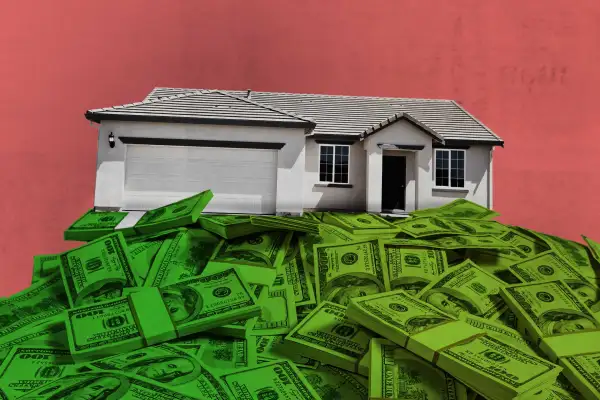Shrinkflation Hits $1 Million Homes: Buyers Are Paying Top Dollar and Getting Less

After two years of double-digit price growth in the housing market, buyers are finding out $1 million just doesn’t stretch as far as it used to.
The typical million-dollar home purchased in the second quarter of 2022 was smaller and older and had fewer bathrooms compared to houses sold for the same amount before the pandemic, according to a new analysis from real estate platform Zillow.
In the second quarter of 2019, a $1 million home had a median square footage of 2,900. Three years later, that number had shrunk nearly 10%, to 2,624 square feet.
“Bathrooms were the biggest casualty of this square footage loss,” the report says. “Only four of the observed metros saw the median million-dollar home maintain the same number of bathrooms compared to 2019. The rest lost at least the powder room.”
Zillow refers to the trend as “shrinkflation” — a phenomenon that occurs when the price of an item stays the same but the amount you receive gets smaller. It happens to groceries, too, and household goods like paper towels, as inflation pushes prices higher and companies try to recoup some costs.
When it comes to the housing market, that shrinkage is the result of a serious imbalance of supply and demand during the pandemic. With fewer homes on the market, buyers faced fierce competition and in many cases ended up paying a lot more money for a lot less house.
This also explains why the typical million-dollar home is getting older in many cities: An existing shortage of housing was exacerbated by supply chain issues that slowed down construction as well as a crush of demand. Zillow found that in San Diego, million-dollar homes sold in 2019 were typically 16 years younger than those that sold in 2022.
As is always the case with real estate, the trend is more pronounced in some cities and noticeably absent in others. Zillow found that the shrinkflation of million-dollar homes is most evident in pandemic boomtowns like Phoenix, Nashville, Austin and Miami.
In Phoenix, for example, the median square footage of a million-dollar home fell from 4,049 in 2019 to 2,933 in 2022. In St. Louis and Minneapolis, on the other hand, $1 million homes are actually getting bigger.
More home sales for $1 million and up
Understandably, it's more common now for buyers to be paying $1 million or more for homes: Sales of $1 million or more accounted for 6.4% of single-family home closings in the second quarter of 2022, according to Zillow, compared to just 2.3% of the market in 2019. An older report also said that there are nearly 500 cities in the U.S. where the typical home is worth $1 million or more.
It's hard to tell if $1 million home will keep shrinking and homebuyers will continue to get less for their money going forward.
Many realtors say that the housing market as changed dramatically over the past few months, and the data backs the sentiment up: Sales are slowing, as is construction, and price growth is leveling off as the bidding wars that defined the last two years fade away.
More from Money:
Zillow Says Home Values Just Fell for the First Time in a Decade
Housing Market Update: Price Cuts Are In, Bidding Wars Are Out

